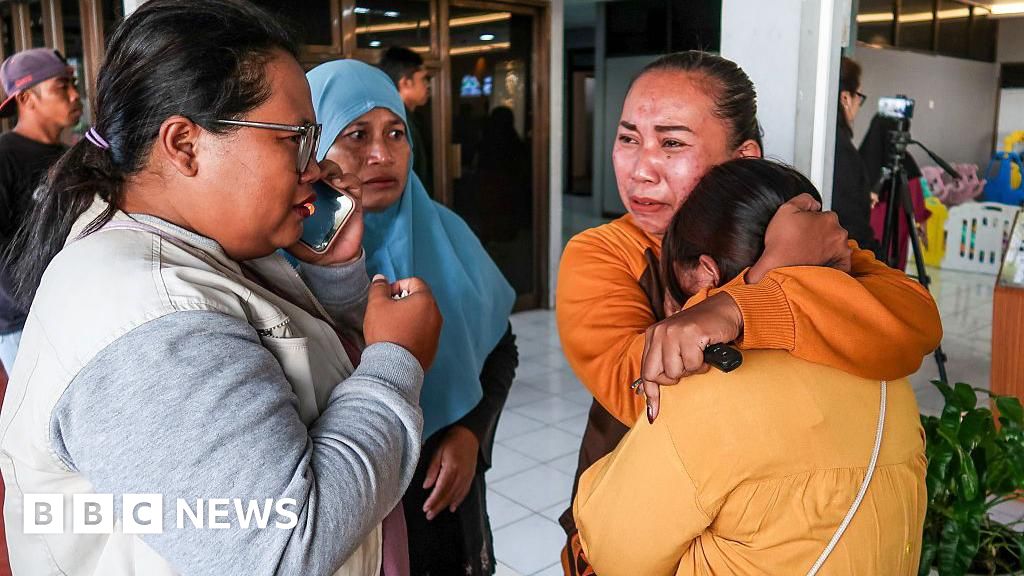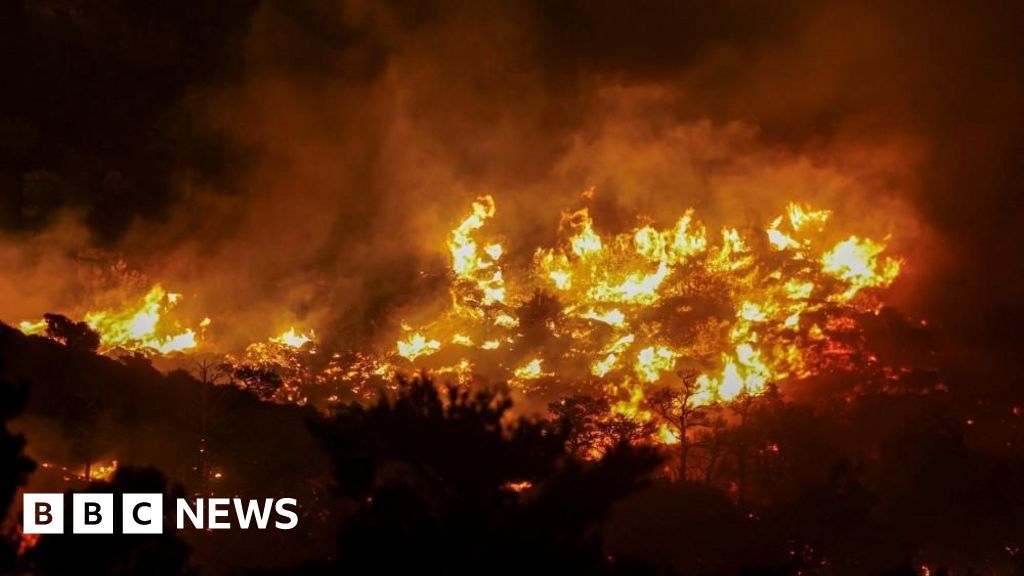ARTICLE AD BOX
Two people were found dead by firefighters tackling a blaze in Spain's Catalonia region on Tuesday, as Europe endures scorching temperatures during the ongoing heatwave.
In a statement, Catalan authorities said the bodies were found after firefighters extinguished a fire in the Torrefeta area, near the town of Coscó.
A 10-year-old American tourist visiting the Palace of Versailles died after falling ill, French media reported.
Earlier, the country's ecological transition minister said two heat-related fatalities were recorded in France, adding more than 300 people were treated by firefighters on Tuesday.
The European continent is experiencing extremely high temperatures, a phenomenon that the UN's climate agency said is becoming more frequent due to "human-induced climate change".
As reported by French broadcaster TF1, a child aged 10 collapsed at the courtyard of the royal estate, in front of her parents, at around 18:00 local time on Tuesday. Despite efforts by the castle's security team and emergency services, she was pronounced dead an hour later.
For Spain and England, the month of June marked their hottest June since records began. Spain's weather service, Aemet, said last month's average temperature of 23.6C (74.5F) "pulverised records", surpassing the normal average for July and August.
Firefighters worked throughout Tuesday night in Catalonia to define the perimeter of both the Torrefeta and Florejacs fires, according to the region's fire service.
In a statement on Wednesday, the fire service said their efforts were focused on establishing the perimeter, extinguishing fires in buildings, and ruling out any more victims.
As of 22:37 local time on Tuesday (21:37 BST), Catalonia's emergency services established they were working in a perimeter of about 6,500 hectares, which is about 40km (25 miles) long.
According to reports by Spanish media, the two people killed in the fire in Coscó were the owner of a farm and a worker. The pair were aged 32 and 45.
Firefighters said they found the two bodies "lifeless" when tackling the blaze. Catalonia's regional president, Salvador Illa, said he would be visiting the area.
Spanish forecaster Aemet predicts that Wednesday will see highs of 41C in Córdoba, a city in southern Spain.
France's ecological transition minister, Agnès Pannier-Runacher, said the two deaths in her country were a result of "heat-related illness".
It comes as France registered its second-hottest June since records began in 1900. June 2025 only trails behind June 2023, when the country also experienced intense heat.
Four departments in France remain on the red alert level for heat, the highest level. These include Aube, Cher, Loiret and Yonne, according to the country's weather service, Meteo France.
The forecaster predicts some storms in parts of eastern France, with highs of 37C in Metz in the north-east.
In Italy, a 75-year-old man in the Budoni, Sardinia, died after falling sick because of the extreme heat. Another man, 60, became sick while on the beach of Lu Impostu in San Teodoro. Emergency services tried to save both men without success.
Temperatures in the region have exceeded 40C in recent days.
Also in the Mediterranean country, two construction workers in Tezze sul Brenta, in the province of Vicenza, were rushed to hospital at 15:30 local time on Tuesday because they fell ill as a result of the heat while working in a hole.
One of the workers is in a coma, according to reports by Italian news agency Ansa, who report that he was resuscitated, intubated and taken to San Bassiano hospital by helicopter.
Dimple Rana, heat and microclimate specialist at sustainable development consultancy Arup, told the BBC there is "a big link between heat-related impact and age".
In the UK, for example, most heat-related deaths were among older adults, Ms Rana said. Younger children, particularly those under five, were also at risk.
Another factor to consider is that often people on lower incomes undertake more manual work, Ms Rana said, meaning they are more exposed to higher temperatures.
Intense heat on Tuesday led to power outages in Florence city centre, due to a peak in consumption from air conditioners and some underground electrical cables overheating, Italian media reported.
The blackout on Tuesday afternoon meant homes, hotels and shops were without power. ATMs were also out of action and alarm systems in shops and other business premises were deactivated.
In Bergamo, the overheating of underground cables also caused a power outage in half of the city. On one side towards Piazza della Liberta, the lights were on and people could congregate outside, while on the other, towards Sentierone, no electricity meant dark shop fronts and little to no nightlife.
The blackout in Bergamo on Tuesday spanned several hours, with no power between 16:00 and 22:46 local time.
Heatwaves are becoming more common due to human-caused climate change, according to the UN's Intergovernmental Panel on Climate Change.
Extreme hot weather will happen more often - and become even more intense - as the planet continues to warm, it has said.
Heat and microclimate expert Ms Rana said we need efforts to reduce greenhouse gas emissions, through using more clean energy for example, but we also need to adapt.
The World Meteorological Organization (WMO), which is the UN's weather and climate agency, said on Tuesday that human-induced climate change means "extreme heat is becoming more frequent and intense".
In a statement, the WMO added: "The effect of heat on human health is more pronounced in cities as a result of the urban heat island effect.
"This is where urban environments are significantly warmer than surrounding rural areas, especially during hot periods, due to an abundance of paved surfaces, buildings, vehicles, and heat sources."
"This additional heat in cities exacerbates heat stress and can increase mortality during hot periods," the agency said.

 14 hours ago
18
14 hours ago
18








 English (US) ·
English (US) ·